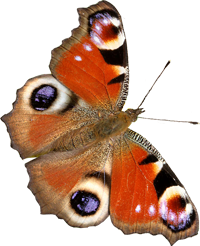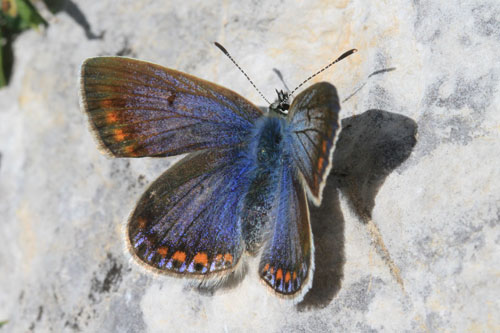
Asturias Mts, Spain, July 2011
A very blue female.
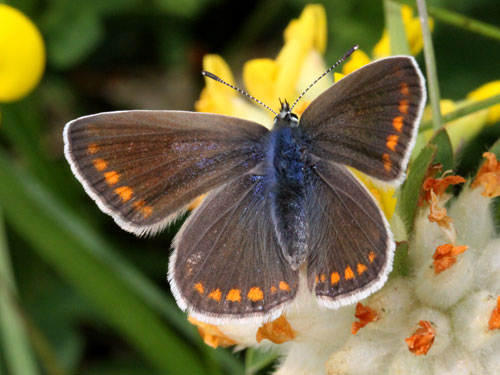
Vaud, Switzerland, May 2013
A typical brown female with traces of blue basally.
Field notes and information
One of Europe's most widespread butterflies. It is common in many divers habitats flying in multiple generations thoughout the warmer months, typically from March or April to October or November in southern Europe.
Identification & Similar species: It is such a common generalist species it nearly always has to be considered when identifying blues. Males have a uniform violet-blue upper side with narrow black borders, lacking andriconal scaling. The fringes are uniform white (lack checkering). The underside has numerous spots, including a cell spot on the forewing although this is absent in a small but significant percentage of individuals.
The chapman's blue P. thersites is a very similar species. It always lacks the underside forewing cell spot and the basal area of the upperside forewing is rough with andriconal scales.
Recently P. celina has been separated from the common blue, P. icarus. It has marginal spots on the upperside of both wings, but I don't know how reliable this.
Distribution & Flight: Throughout Europe, being replaced by P. celina in the Canaries and north Africa and possibly southern Spain and some islands of the western Mediterranean. It flies in all warm months of the year.
Habitat & Behaviour: Habitats are diverse on all soil types, warm and cool, open or wooded and at all altitudes up to high alpine meadows. They are typically flowery or grassy.
Variation: With such a wide distribution, range of habitats and number of generations in the year, it is not surprisingly very variable. The underside varies greatly, hampering identification in some cases. The females are extremely variable on the upperside too, with the extent of blue and brown varying from nearly 0% to 100% and often with submarginal orange-white spots sometimes very bold and extensive.
In very hot dry places in the summer, tiny individuals are often encountered.
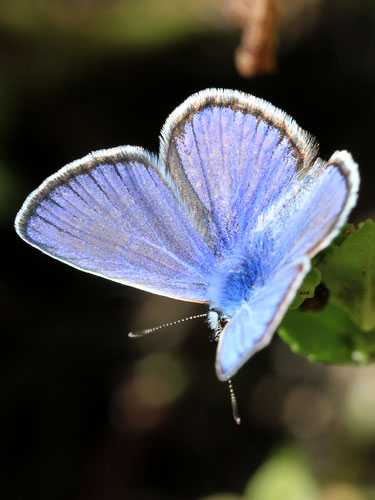
Corisca, France, July 2012
Male without andirconal scale on the basal half of the forewing compared to the Chapman's blue Agrodiaetus thersites.
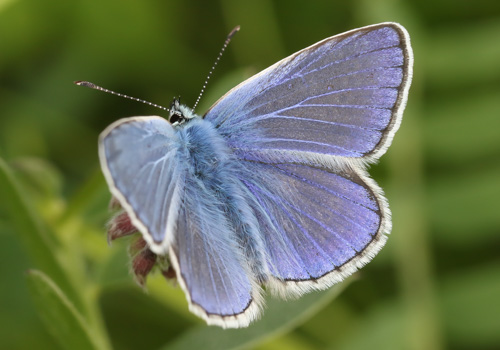
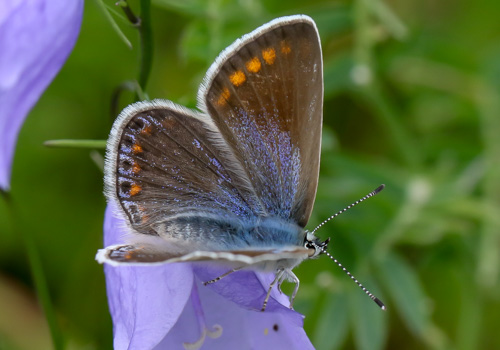
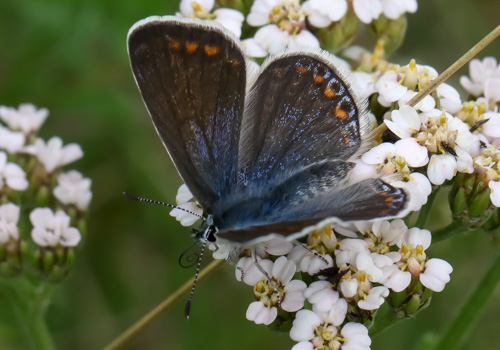
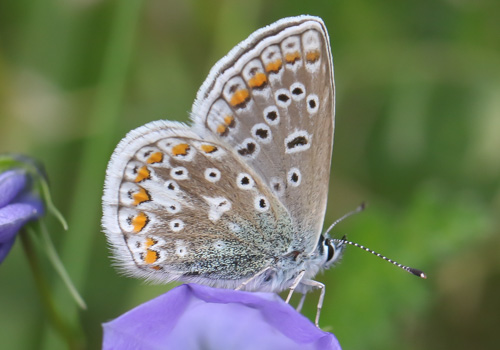
N Sweden, July 2022
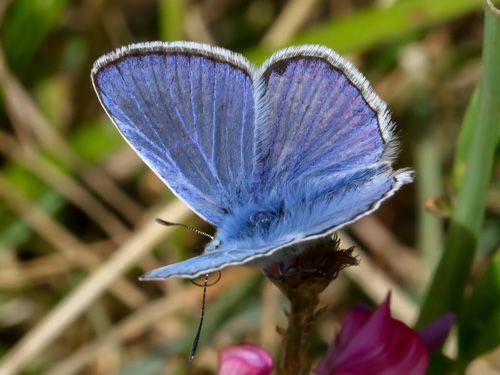
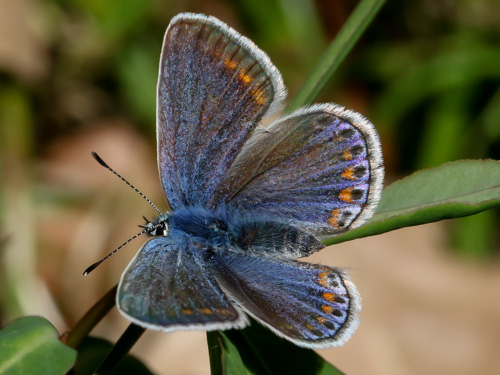
Vaud, Switzerland, May 2021
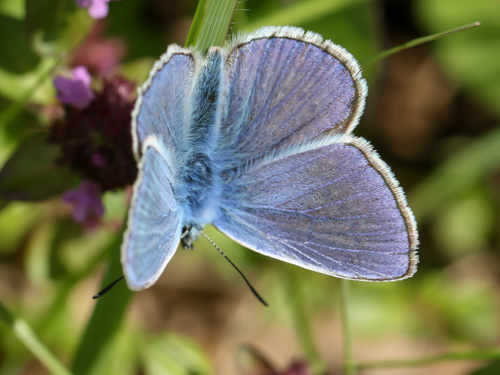
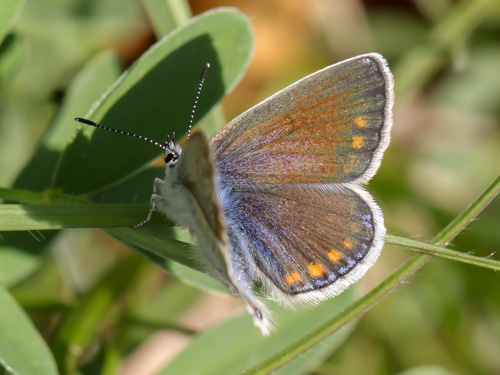
Vaud, Switzerland, May 2019
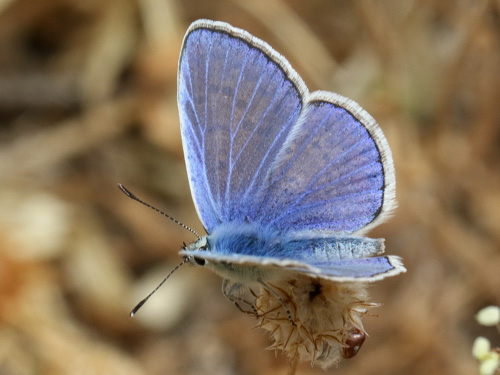
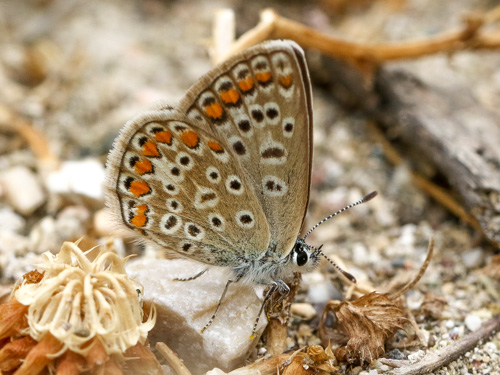
Rhodes, Greece, May 2017
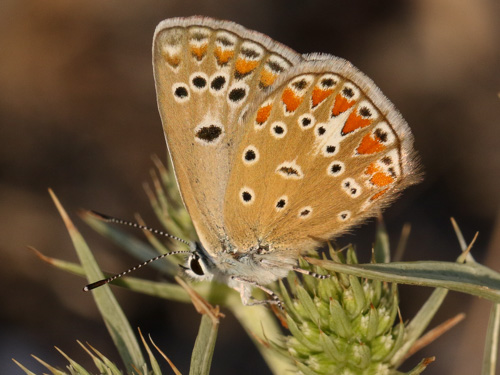
Huesca, Spain, July 2017
Lacking forewing cell spot - only in less than 10% of individuals.
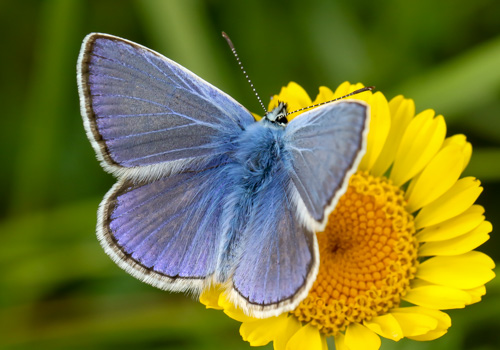
Valais, Switzerland, June 2022
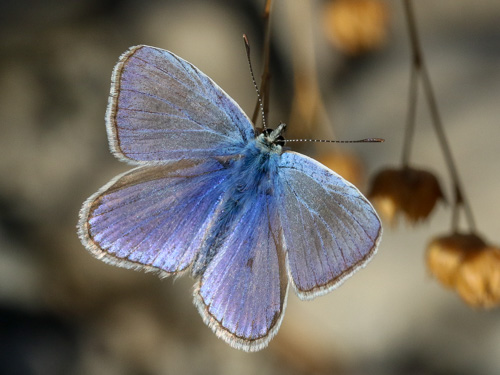
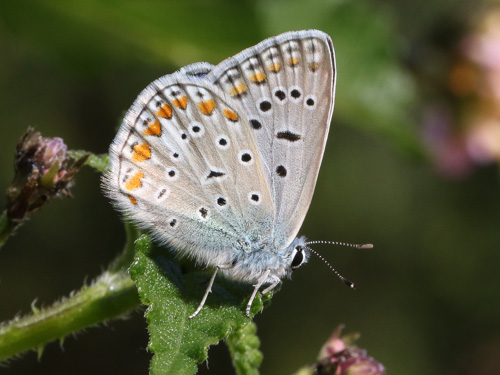
Crete, Greece, October 2017
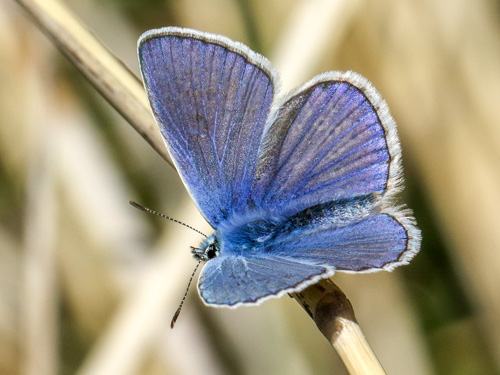
Valais, Switzerland, April 2017
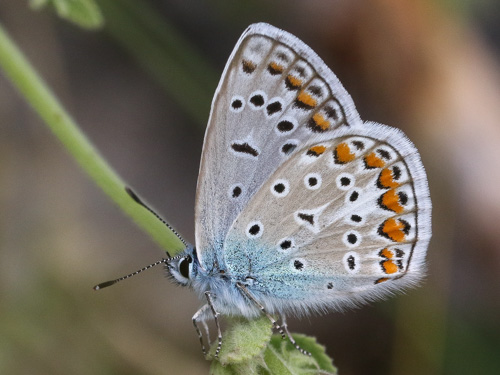
Peloppenesos, Greece, July 2018
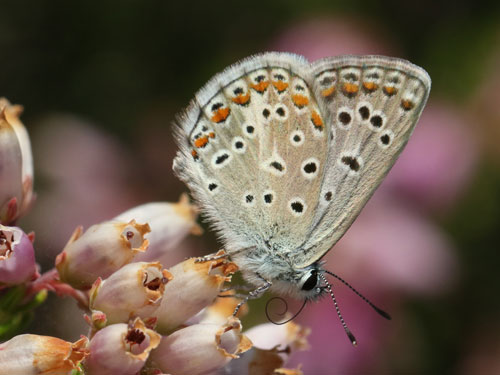
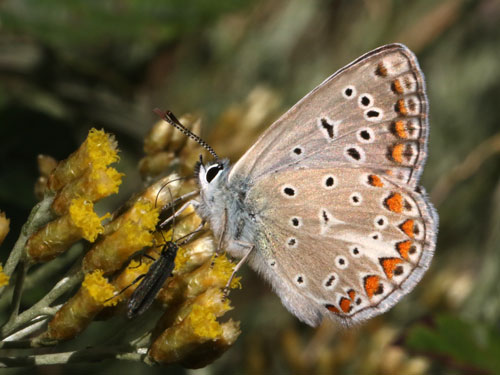
Gennargentu, Sardinia, Italy, July 2015
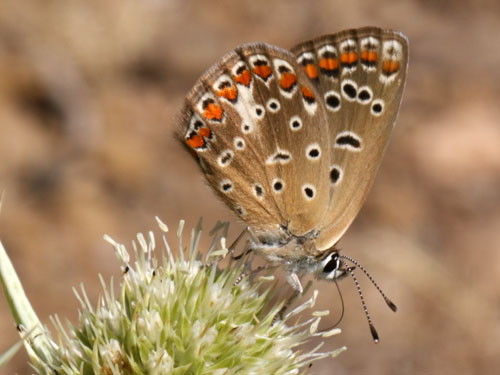
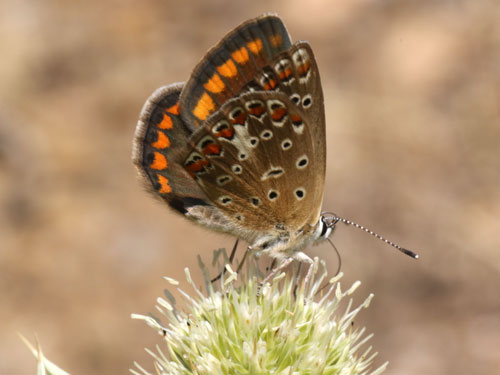
Gennargentu, Sardinia, Italy, July 2015
